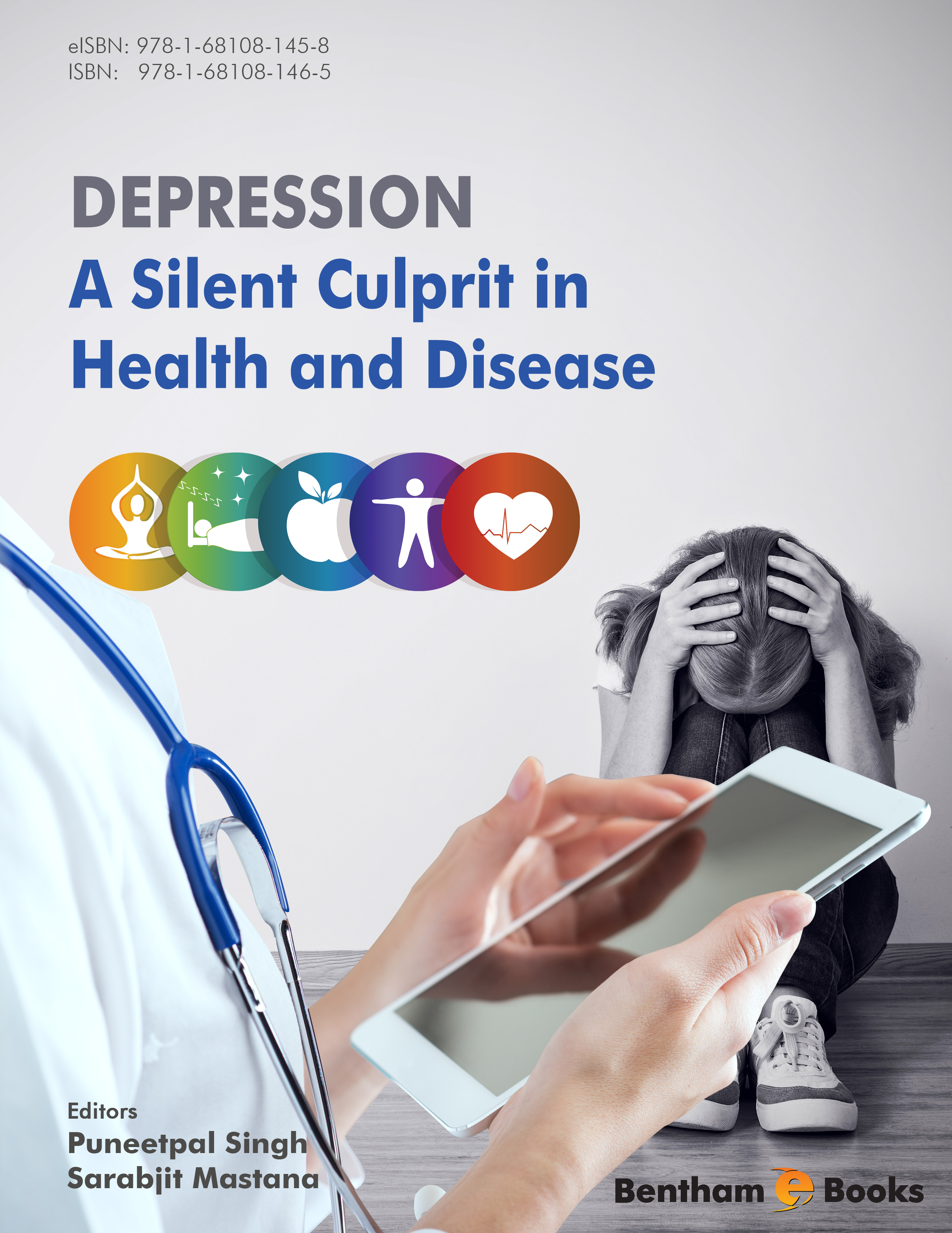This book is about depression, a malady which has tethered to almost every disease condition and
metastasized in every section and every phase of life. It discriminates none, remains silent but in
due course of time, manifests in a very loud manner. Despite the fact that it is associated
significantly to some of the dreaded diseases, it is often considered as an artefact of age or of
concomitant health problem and usually not considered amenable to intervention by health
practitioners and general physicians. In the last couple of years, researchers have heralded various
risk factors that can contribute to depression and documented their preventive measures, but every
time, it appears that it is more complex than what we know so far.
The present eBook, “Depression: A Silent Culprit in Health and Disease” is aimed to consolidate
state of the art knowledge from scholars of high repute who have contributed immensely in the
field of depression. This treatise tries to bring comprehensive review of latest technological
advances in understanding and diagnosing depression, its genetic causes and concerns along with
post-stroke consequences which impinge substantially upon health and disease.
In the first chapter, “Depression: It Matters!” author Ana Maria Sanchez Peralta has familiarized
about the neurotransmitters, which are present in central nervous system and serve as chemical
messengers that transmit signal across synapse from one neuron to another. Imbalance of these
endogenous chemicals triggers depression and extent of their imbalance decides severity of
depression. She has elaborately discussed various forms of anti-depressants and their adverse
effects, withdrawal aftermaths and contraindications. Therapies to treat depression vary according
to its presence in different diseases, information given regarding this in the chapter is noteworthy
and justifies that it matters.
Apropos to every query submitted, a musical event is organized in the hall of brain, where central
nervous system plays melodious concert and millions of neurons dance to perform synchronized
ballet. This symphonized answer can be understood by a rhythmic wave named P300, musicality
of which has been interrogated in the second chapter by Prakash et al. This chapter engrosses the
attention that neurophysiological examination of P300 wave can comprehend the different layers
of depression and putforth that application of P300 wave in clinical settings has tremendous
potential in diagnostic and prognostic modalities in major depressive disorder.
Third chapter emphasizes that many stroke survivors undergo depression which can be
exacerbated by advancing age and if remains untreated, may lead to adverse outcomes and even
mortality. In order to understand the age specific depression after stroke and its preventive
measures, authors have pointed out several molecular and cellular mechanisms that can contribute
to it, while ageing. Some screening instruments and therapeutic strategies for post-stroke
depression have also been discussed, which help us to control depression, which otherwise has
formidable impact after ischemic stroke in ageing brain.
Fourth chapter emerges from the query that whether gene and genome wide association studies
precisely infer genetic contributions for the risk of depression in post genomic era. Albeit, this
chapter by Singh et al. revolves around the genetic, epigenetic and pharmacogenetic concerns of
depression, but persuades to realize that the concept of ‘Personal Medicine’ proposed by scientists, by which every person will be treated according to the genes one carries, appears to be a distant
dream.
Gianluca Serafini and co-workers have browsed seventy published research papers to uncover the
utility of diffusion tensor imaging techniques for understanding brain white matter abnormalities
in relation to pathophysiology of major depressive disorder and suicidal behavior. They have
deduced that microstructural white matter abnormalities located in neural circuits are critically
involved in emotional processes and mood regulation, which may result in enhanced vulnerability
to psychiatric morbidity contributing to functional impairments. This review chapter offers an
indepth understanding of the current knowledge and applicability of diffusion tensor imaging
techniques in major depression and suicidal ideation.
I am deeply indebted to Ms. Shallu Khullar for her extended help in style editing of the book. I
extend my heartfelt gratitude to Ms. Humaira Hashmi, In-charge eBook department and editorial
manager publications, Ms. Maria Baig, Manager Publications and especially Mr. Mahmood Alam,
Director Publications, Bentham Science Publishers for their kind support, encouragement and
help.
Puneetpal Singh
Department of Human Genetics
Punjabi University, Patiala
India

